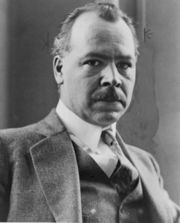EurekAlert! had a piece about the Resurrection Initiative a couple of days back:
While an international seed bank in a Norwegian island has been gathering news about its agricultural collection, a group of U.S. scientists has just published an article outlining a different kind of seed bank, one that proposes the gathering of wild species — at intervals in the future — effectively capturing evolution in action.
I guess the idea is worthy enough, but the article is unfortunately full of misconceptions about genebanks. I’ll just highlight the most egregious.
“In contrast to existing seed banks, which exist primarily for conservation, this collection would be for research that would allow a greater understanding of evolution,” said Franks.
Really? That will come as a surprise to all the breeders and other users of genebank materials.
“Typically, seed banks are focused on the preservation of agricultural species or other plant species of strong economic interest, say, forest species, forest trees,” said Mazer. This is to make sure that scientists can maintain a genetically diverse seed pool in the event of some kind of ecological calamity that requires the replenishing of seeds from a certain part of the world or from certain species.
Well, while it is true that most seedbanks concentrate on crops, they do also maintain samples of wild relatives of crops, though probably not nearly enough, and of wild forages. And there are major genebanks — such as the Millennium Genebank at Kew — which conserve only wild species. But it’s the second part of the quote that is perhaps most surprising. Although genebank materials have indeed been used in restoration, surely their most common use is as sources of genes for breeding programmes.
“The approach that we would use is not simply to collect seeds over various time intervals and to archive them, but in the future to raise them in a common environment comparing seeds that were collected in 2010, 2030, and 2050, for example,” said Mazer. “If we found, for example, that the plants that come from seeds that were collected 50 years from now flower much earlier than those that were collected today, we could logically infer that natural selection over 50 years had favored plants, that is genotypes that flowered earlier and earlier, relative to those that delayed flowering.”
That makes it sound as if genebankers never do any characterization and evaluation of their holdings. Raising seeds in a common environment is in fact a standard genebank operation.
Don’t get me wrong, repeated collecting of the same population is an interesting thing to do. We don’t have enough hard data on genetic change. It has in fact been done even for agricultural species, though not on the systematic basis proposed here. I’ve done it myself, revisiting southern Algerian oases from whence wheat had been collected 10 years before, for example. But to suggest that a different kind of genebank is needed to accomodate such an initiative is stretching it. Let’s make sure we are making effective use of the genebanks we already have. We’re having enough difficulty keeping those going on a sustainable basis.
